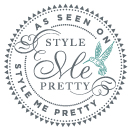Today I'm the mean teacher, and am giving my students at Yellowstone a TEST! My sixth graders in the after-school program that are learning photography with me will need to pass this test and show me they can use their cameras before they can take their camera home and begin the projects. We are going to start working on projects next semester! I'm not entirely sure they are fully prepared for this test...they are a hard bunch to control sometimes and to gain their attention. But we've had a couple of really great class periods the last couple Wednesdays, so I think they'll do pretty well.
See below for the test, and see how you do! I've tried to make the wording such that an elementary/middle schooler can understand, but please let me know if you have any suggestions!
Name:____________ Date:________
Photography Test 01
1.) A picture is made by ____________ entering the camera and exposing the film.
a.) paint
b.) light
c.) your subject
2.) What is the “Aperture” in your camera?
a.) the hole in the lens of the camera that controls HOW MUCH light hits the film.
b.) the part of the camera that you put your eye to to see your subject
c.) the part of the camera that opens and and shuts really quickly!
3.) What does the “Aperture” control?
a.) Whether my subject smiles or frowns.
b.) The length of time light enters the camera.
c.) HOW MUCH light hits the film during an exposure
3.) How do you change the “Aperture” on your camera?
a.) Look to the right inside your viewfinder.
b.) Turn the ring on your lens closest to your camera body.
c.) Turn the knob on-top of your camera body with numbers on it
4.) What is the “Shutter” in your camera?
a.) the hole in the lens of the camera that controls HOW MUCH light hits the film.
b.) the part of the camera that you put your eye to to see your subject
c.) the part of the camera that opens and and shuts really quickly, and controls
HOW LONG light hits the film!
*HINT: Remember “one one-thousandth!”
5.) What does the “Shutter” control?
a.) Whether my subject smiles or frowns.
b.) THE LENGTH OF TIME (HOW LONG) light enters the camera.
c.) HOW MUCH light hits the film during an exposure
6.) How do you change the “Shutter” on your camera?
a.) Look to the right inside your viewfinder.
b.) Turn the ring on your lens closest to your camera body.
c.) Turn the knob on-top of your camera body with numbers on it.
7.) What makes up an Exposure?
a.) Subject + Camera = Exposure
b.) Aperture + Shutter Speed = Exposure
c.) Lens + Focus = Exposure
8.) Where do you look to see if you have a “Correct Exposure” in your camera before you take a photo?
a.) The front of the lens.
b.) Underneath the camera.
c.) When your eye is looking through the camera, you look to the right side, where there is a needle and a “+” and “-” sign
9.) How do you know when you have a correct exposure for the picture you are about to take?
a.) When the needle is at the top, near the “+” sign, like below.

b.) When the needle is in the middle, in the open space directly between the “+” and “-” signs, like below.

c.) When the needle is at the bottom, near the “-” sign, like below.

10.) What word should you think of before taking every photo, and what does it stand for?
a.) How pretty your subject is, and nothing else.
b.) LCA (stands for “Lights, Camera, Action!”)
c.) SAFE (stands for “Shutter, Aperture, Focus, EXPOSE!”--the things you should always think about before taking a photo).
Bonus Questions: (Please circle either “Yes” or “No” or “True” or “False”)
1.) Should you ever open the back of your camera before rewinding your film?
Yes No
2.) Choosing a slower shutter speed (smaller number) will make a moving subject blurry, while choosing a higher shutter speed with freeze a subject in action.
True False
3.) You should not take photos with a shutter speed of “15” or below on your shutter speed dial, otherwise your photos might turn out blurry. “30” is the slowest shutter speed you should use.
True False
4.) An appropriate shutter speed for inside is probably going to be around “30” or “60” on your shutter speed dial.
True False
5.) An appropriate shutter speed for outside is probably going to be above “250” on your shutter speed dial.
True False
PART TWO:
WHEN YOU ARE FINISHED, PLEASE BRING THIS TEST AND YOUR CAMERA TO ME TO BEGIN THE SECOND PART OF YOUR TEST.
YOU WILL BE SHOWING ME HOW TO:
1.) Hold your camera correctly
2.) Focus
3.) Load Film
4.) Control the Aperture of your camera
5.) Control the Shutter speed of your camera
6.) Determine a “Correct” exposure
7.) Take a picture!
 Friday, December 18, 2009 at 4:49PM
Friday, December 18, 2009 at 4:49PM 















































 Chris Bailey Photography
Chris Bailey Photography